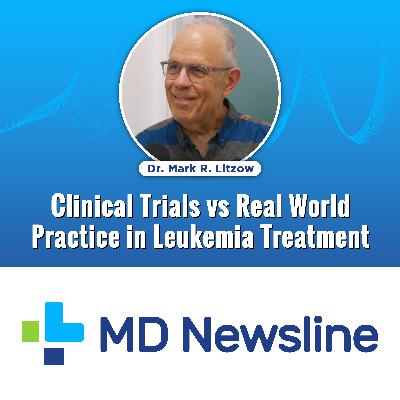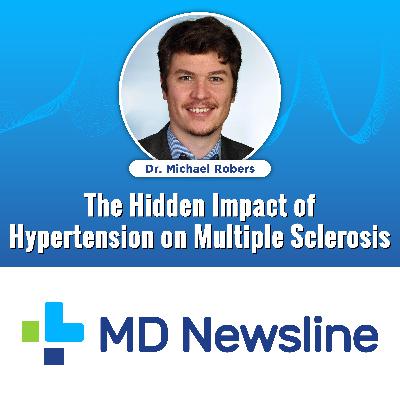High-Risk Multiple Myeloma & Personalized Treatment
Description
In this episode of MD Newsline, Dr. Martin Kaiser, Consultant Hematologist at the Royal Marsden Hospital and Professor of Hematology at the Institute of Cancer Research, London, discusses groundbreaking advances in the diagnosis and management of high-risk multiple myeloma. Drawing insights from the OptiMUM trial and related studies, Dr. Kaiser explores how genetic profiling, long-term treatment intensity, and personalized approaches are transforming patient outcomes. He also examines the challenges of treatment accessibility, the promise of T-cell–based therapies, and the evolving role of AI and MRI technology in hematology.
Episode Highlights
Understanding High-Risk Myeloma
Dr. Kaiser explains that multiple myeloma varies greatly between patients, with high-risk myeloma representing the most aggressive form. Recent progress in genetic diagnostics now enables clinicians to identify these patients more accurately using chromosomal translocations, deletions, and point mutations such as TP53.
New Guidelines and Diagnostic Tools
He highlights a newly published international guideline that promotes the use of advanced genetic and molecular tools to define high-risk myeloma. This progress allows for more precise risk stratification and individualized care planning.
The OptiMUM Trial: Redefining Treatment Duration
Dr. Kaiser shares results from the OptiMUM trial, which demonstrated that maintaining treatment intensity beyond the initial six months leads to dramatically improved outcomes—nearly tripling progression-free survival and significantly extending overall survival. He emphasizes that balancing side effects with efficacy is key, and patient feedback plays a central role in long-term management.
Inclusivity in Clinical Research
The OptiMUM study included 39 hospitals across the UK, including community and rural centers, ensuring that data represented diverse and underserved populations. This broad inclusion provides strong evidence for the real-world effectiveness of intensive therapy.
Emerging Therapies and the Future of Care
Dr. Kaiser discusses T-cell–based treatments, including CAR-T cells and bispecific antibodies, which are showing remarkable efficacy in relapsed or refractory myeloma. He anticipates their movement into earlier lines of therapy, potentially reshaping high-risk myeloma management in the coming years.
Balancing Quality of Life and Long-Term Treatment
Sustained therapy requires careful patient–physician collaboration. Dr. Kaiser stresses the importance of listening to patients, managing side effects proactively, and individualizing care to maintain adherence without compromising quality of life.
Monitoring and Diagnostics Innovations
He describes advances in whole-body MRI and minimal residual disease (MRD) testing, which provide earlier and more sensitive detection of relapse. Combined with regular blood monitoring, these innovations support proactive, precision-guided care.
Looking Ahead: AI and Genomic Insights
Dr. Kaiser envisions AI-driven imaging and data analysis as the next frontier in myeloma diagnostics. By combining genetic, epigenetic, and imaging data, AI tools could soon enhance diagnostic speed, accuracy, and personalization in clinical practice.
Key Takeaway
Dr. Martin Kaiser emphasizes that high-risk myeloma care is entering a new era—defined by genomic precision, long-term treatment optimization, and advanced diagnostics. By sustaining therapy intensity and improving diagnostic access, clinicians can achieve longer remissions and better survival outcomes. Collaboration among healthcare systems, researchers, and patients remains vital to ensure equitable access to these life-extending innovations.
Resources
Website: https://mdnewsline.com/
Newsletter: https://mdnewsline.com/subscribe/
Connect with Dr. Martin Kaiser: Here
























